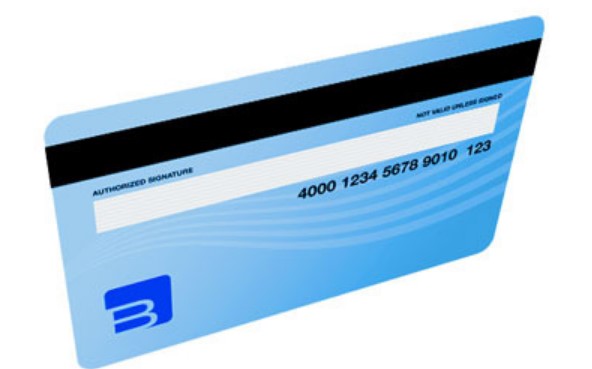
You know those cards you carry around in your wallet - your credit card, debit card, ID badge, library card, and all the rest? Chances are those cards all have one thing in common - a magnetic stripe on the back. This magnetic stripe is how all the information on those cards is stored and read by machines.
But did you know there are actually two different types of magnetic stripe cards - HiCo and LoCo?
HiCo stands for "high coercivity", which refers to how strong the magnetic field is on the stripe. HiCo cards typically have a magnetic field strength around 2750 Oersted. This higher strength makes the High Coercivity (HiCo) Magstripe Cards much more durable and resistant to being accidentally erased or demagnetized.
The increased durability of HiCo cards makes them the go-to choice for applications where the card will see a lot of frequent, long-term use. Things like credit/debit cards, employee ID badges, library cards, and access control cards are all great examples of where HiCo cards shine.
The strong magnetic field on HiCo cards means it takes more energy to initially encode the data onto the stripe. This makes the card readers and writers used for HiCo cards a bit more expensive than the equipment for LoCo cards. But the trade-off is that the data on HiCo cards is much less likely to be accidentally erased or corrupted over time.
LoCo stands for "low coercivity", and these cards have a much weaker magnetic field, usually around 300 Oersted. This lower strength magnetic stripe makes the data more vulnerable to being erased if the card gets too close to a magnet.
While this may sound like a disadvantage, the lower coercivity of LoCo cards actually makes them better suited for certain applications. Since it requires less energy to write data onto the magnetic stripe, the card readers and writers for LoCo cards are generally less expensive than the HiCo equivalents.
This makes LoCo cards a more cost-effective choice for things like hotel room keys, amusement park passes, gift cards, and phone cards - situations where the card may only be used for a short period of time and the data needs to be changed or updated frequently. The lower cost of the LoCo card equipment makes sense in these disposable, variable-data use cases.
The tradeoff, of course, is that LoCo cards are not as durable as HiCo. Their weaker magnetic stripes are more prone to accidental erasure or demagnetization. So they're not the best choice for high-use, long-term applications where you need the data to stay intact.
So how do you know whether to go with a HiCo or a LoCo magnetic stripe card? It really comes down to two key factors:
If you need the card to last for years of frequent use, HiCo is the way to go. But if it's a more temporary, short-term card, LoCo might be the better, more cost-effective option.
High Coercivity (HiCo) Magstripe Cards excel when the data encoded on the stripe needs to remain stable. LoCo cards are better suited when the data will need to be updated or changed on a regular basis.
For example, your credit or debit card is a perfect use case for a HiCo magnetic stripe. You need that card to work reliably for years, with the sensitive financial data remaining secure. Whereas a hotel room key card is better suited to a LoCo stripe, since you only need it to work for your stay, and the hotel can easily reuse and re-encode the card for the next guest.
Both HiCo and LoCo magnetic stripe cards have their advantages. But understanding the key differences between the two can help you make the best choice for your specific application. The small added cost of High Coercivity (HiCo) Magstripe Cards is usually worth it for the improved durability and data integrity in most situations.